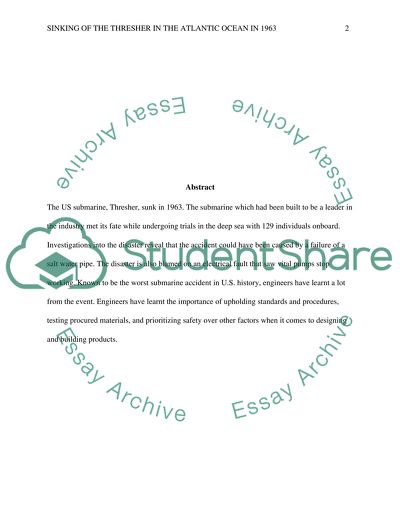Cite this document
(“Thresher Sinking Atlantic Ocean (1963) Essay Example | Topics and Well Written Essays - 3250 words”, n.d.)
Thresher Sinking Atlantic Ocean (1963) Essay Example | Topics and Well Written Essays - 3250 words. Retrieved from https://studentshare.org/engineering-and-construction/1495252-thresher-sinking-atlantic-ocean
Thresher Sinking Atlantic Ocean (1963) Essay Example | Topics and Well Written Essays - 3250 words. Retrieved from https://studentshare.org/engineering-and-construction/1495252-thresher-sinking-atlantic-ocean
(Thresher Sinking Atlantic Ocean (1963) Essay Example | Topics and Well Written Essays - 3250 Words)
Thresher Sinking Atlantic Ocean (1963) Essay Example | Topics and Well Written Essays - 3250 Words. https://studentshare.org/engineering-and-construction/1495252-thresher-sinking-atlantic-ocean.
Thresher Sinking Atlantic Ocean (1963) Essay Example | Topics and Well Written Essays - 3250 Words. https://studentshare.org/engineering-and-construction/1495252-thresher-sinking-atlantic-ocean.
“Thresher Sinking Atlantic Ocean (1963) Essay Example | Topics and Well Written Essays - 3250 Words”, n.d. https://studentshare.org/engineering-and-construction/1495252-thresher-sinking-atlantic-ocean.


